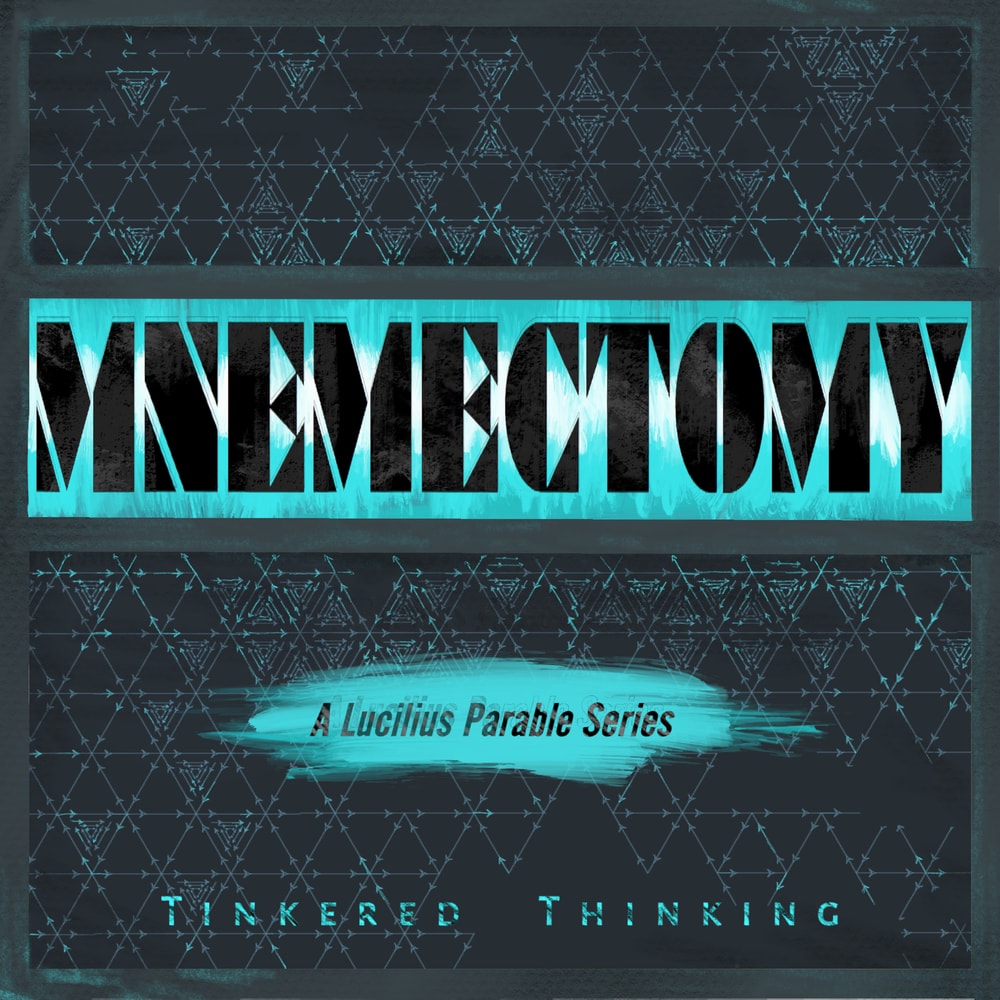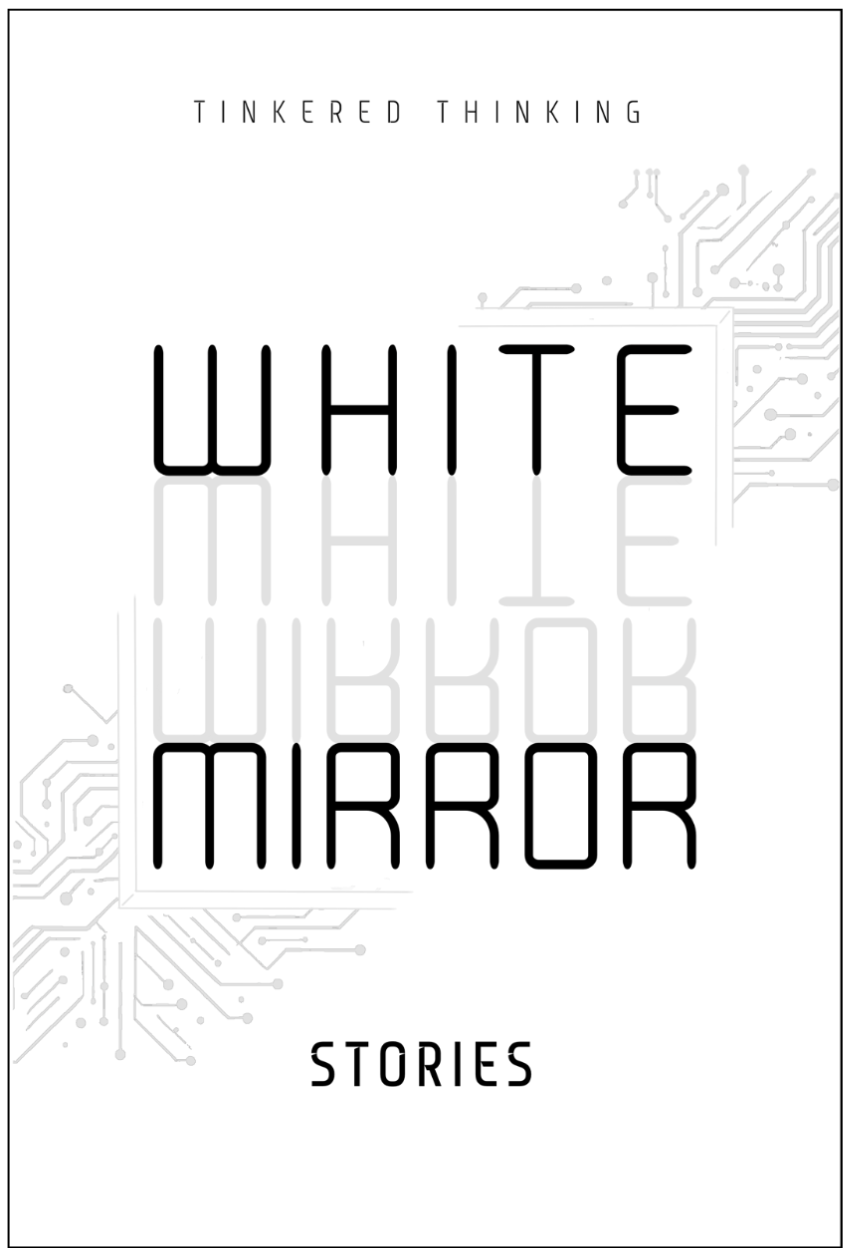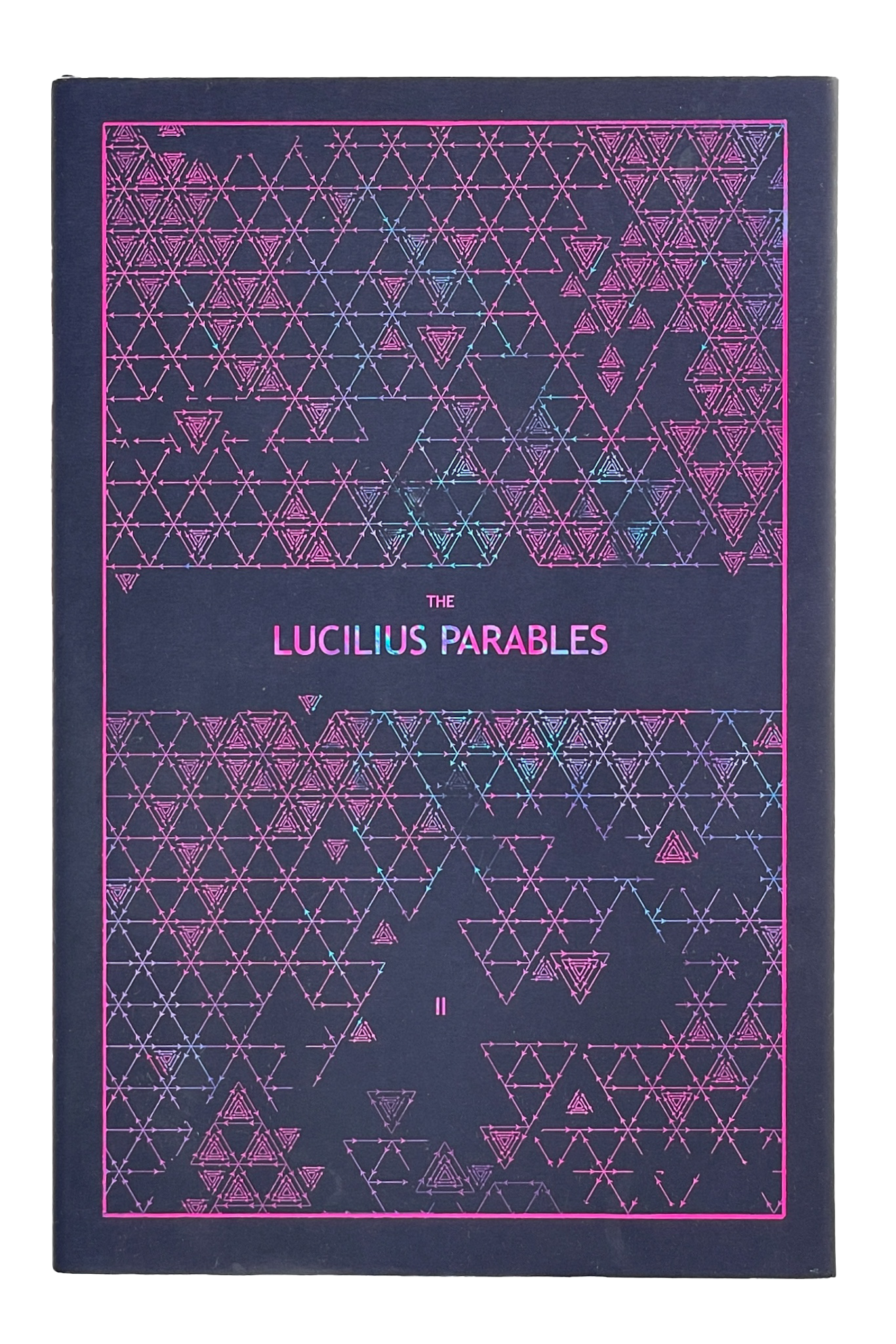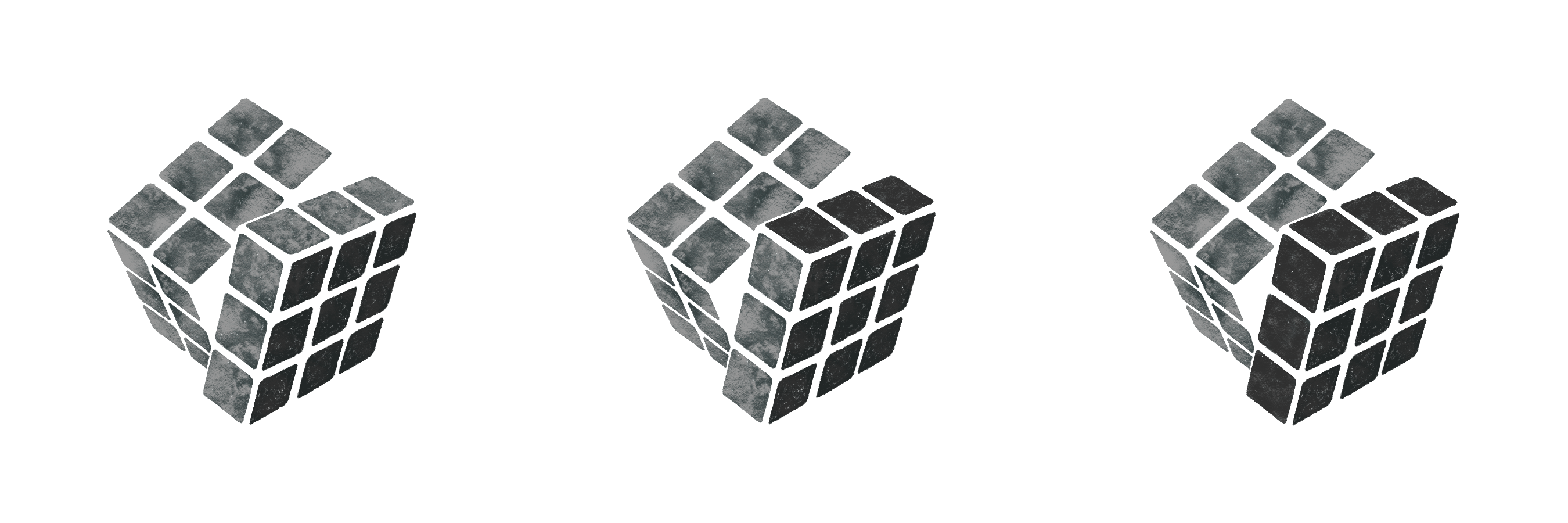Daily, snackable writings to spur changes in thinking.
Building a blueprint for a better brain by tinkering with the code.
subscribe
rss Feeds
SPIN CHESS
A Chess app from Tinkered Thinking featuring a variant of chess that bridges all skill levels!
REPAUSE
A meditation app is forthcoming. Stay Tuned.
A LUCILIUS PARABLE: THE DESTINATION
January 17th, 2021
As the planet grew in the cockpit window a small light began to blink on the control panel, and then with it another light and a periodic beep. Just behind the empty command chair a large frosty glass tube lit up blue and behind the warp of fog and ice there was clearly a human being. The tube warmed, the ice thawing as the planet grew ever larger in the view of space.
The airlock of the tube hissed and swung open. A few dreary moments passed as Lucilius opened his bleary eyes. He coughed, and immediately held his head which ached from the long sleep. He looked around at the cockpit, and stale memory returned. He remembered clambering into the escape pod, seeing thousands like it scattering out into the deep night of space. Everything had happened so quick, he didn’t know if it had been an attack or a malfunction.
He got up and sat in the command chair, not even glancing at the large planet in view. He clacked in some commands to bring up date and mission time. A mistake to be sure, he figured looking at the time. He reentered the commands and the same numbers popped up on the screen.
His mind was blank. He looked up at the strange planet, then around at the inside of the pod. There was no way to verify the computer’s log, but it seemed inconceivable he’d been asleep so long, unrecovered by another ship, just… drifting.
Another alarm started to sound.
“What?” Lucilius said out loud, looking at it in disbelief.
The alarm signalled signs of life on the planet ahead. Lucilius only watched the blinking alarm aghast. He’d been part of an enormous campaign to venture out into the galaxy in search of life, and now here he was, so many dreamless years later, all on his own before a planet that seemed to hold exactly what they’d all set out to find.
He initiated a descent to the planet’s surface and plunged the agile pod down into the long bands of clouds that striped the planet, creating massive rows of light that stretched enormous across the curved landscape.
The moment he punched through the cloud cover his stomach seized. He could see settlements, cities patched across the vast continent. He checked for any kind of radio signal, but all he could pick up was the usual interstellar static - the planet was quiet. A dead civilization, he figured, his hopes sinking.
He angled the pod down to land just on the outskirts of one of these cities. There seemed to be a fog or a low patchy cloud cover just above the ground, and much of it scattered as the pod fired landing boosters for a soft landing.
He put on a suit, double checking the atmosphere readings to make sure it was compatible, and then left the pod. The low cloud cover, hovering waist high parted as he walked toward the city, and for hours he wandered through the alien structures. But none of them seemed to have entrances, nor did they seem to exhibit any kind of life or operation. Clearly they were constructed from some sort of metal or alloy, but he seemed he was in a ghost town.
What was strangest to Lucilius was that there was no sign of alarm, nothing in disarray, no remains of anything, skeletal or otherwise to find.
After some time his oxygen was getting low and he headed back to his pod. He walked through the low cloud cover, pondering the alien structures, wondering what might be his next move in this strange place, during this inconceivable time. He stepped up into the pod and as he turned to check the door as it swung shut he saw something curious. He slapped a button next to the door to arrest it’s movement. A small piece of the low cloud cover had separated from the rest and drifted toward Lucilius’ pod.
He wouldn’t have thought much about the strange fog but there was something about it that seemed deliberate, and the gentle speed of the cloud was too much for a windless landscape. Lucilius quickly swapped out his suit’s tank and then got back out.
The little cloud was still there, separate from the rest of the fog bank, as though waiting for him. Lucilius hunkered down in front of the little cloud, and after a moment reached out to it, but it quickly receded out of reach, startling Lucilius. But after maintaining a safe distance for a couple of seconds the cloud began to approach again, slower.
Lucilius reached out and slowly the cloud gently brushed up against his gloved and unfeeling hand. Then another cloud broke off from the cloud bank and approached Lucilius. The first pulled back and the two seemed to hover near, as two might hang back to talk. Quickly little bits of cloud began separating from the main bank and glided up toward the pod, as though looking at it from every angle, and then the first cloud approached Lucilius and then very quickly covered him completely, swirling around before pulling back again. The curious clouds around the pod also pulled back and together they all became a solid fog bank again, and then, the white clouds turned green, first lightly and then dark, like a kind of terrible bio weapon, but the cloud bank stayed as it was. Then, something else seemed to be changing.
Lucilius looked around, unsure of what he seemed to be sensing, and then he caught it. Light was beginning to reflect brightly off the city structures. It brought Lucilius’ gaze up where he saw an unfathomably sized band of cloud shifting to bathe the entire area in direct light. The green cloud bank before him lit up.
And for a minute, nothing happened. Lucilius was beginning to wonder if there was an effect of the hibernation that was messing with his mind when the green fog bank began to change shape. All around him it started to rise, like a solid wall of green. His nerves rose to an edge as he watched the continuous wall around him begin to narrow and close above him.
For a moment he was in complete darkness. Then his wrist control beeped and lit up. He looked to find nominal atmosphere readings. The bright glow of the solitary little screen was then joined as the cloud all around him began to glow lightly.
The cavity created by the cloud encompassed also the pod, so he signalled the ship to double check the atmospheric readings.
Apparently, it was safe.
It probably wasn’t a wise idea, but Lucilius’ day had been so odd and disorienting so far that it didn’t feel like much of a risk. He took off his helmet.
And he could breath, there in the strangely lit huddle of cloud. From the wall of glowing green a small cloud parted, and the luminous shape floated toward him.
Lucilius removed his glove and reached out to the little cloud. And when they touched, Lucilius heard in his own head
Hello.
Lucilius pulled back, but reached out again to touch the cloud.
Hi there.
Lucilius squinted, and wondered… “is that me, or did this cloud just say something?”
That was me, the cloud. Or rather, us.
“Us?” Lucilius said out loud.
One cloud, different clouds... both make sense to us.
“So, you’re alive?”
Oh yes, certainly.
“And how do you know my language?”
We don’t. Thought doesn’t really have much of a language. Your words are a result of a conversion. We can sense what happens before the conversion.
“So you’re a collective mind?”
Sometimes.
“Did you create the cities?”
Sort of. Our ancestors did, so yes.
“Your ancestors?”
The cloud laughed. Yes, long time ago. It’s been quite a while since I thought about their construction. Long before the great schism.
“What’s the schism?” Lucilius asked.
The cloud sighed. Well, before we evolved into this form we had physical bodies and we were developing technology just as every other evolving creature does. And there came a time to make a decision and that’s when we split into two groups.
“What happened to the other group?”
They left.
“Left? Where’d they go?
They went where all advanced civilizations go.
“What do you mean?”
Have you noticed how quiet the cosmos are?
“Yes, certainly, that’s actually why I’m here, I was sent as part of mission to find life on other planets.”
The little cloud jiggled as it laughed, and the green and glowing walls seemed to animate with a kind of communal laughter.
Pretty odd to have all these quarks playing around and so little life, wouldn’t you say?
“Of course,” Lucilius said, “it’s the ultimate paradox.”
Not so much, the little cloud said. There have been plenty of civilizations to rise among the cosmos.
“And do they fall? Collapse? Is there some sort of bottleneck, or a filter that prevents so many from enduring?”
There are certainly plenty of mistakes to be made along the way, but no, not really. Each civilization eventually makes the necessary discovery.
“And what discovery is that?”
They discover where everyone has gone.
“All civilizations end up going to the same place?”
Yes
“And why aren’t you with them?”
Because of the schism. We decided to stay.
Lucilius looked around at the glowing wall of cloud all around him. “And what do you do?”
We are air farmers.
“Air farmers?”
Yes, we shape the clouds, control the sunlight, and we feed off of a simple chemical reaction that we host. Our talents are also what allow us to create your air.
“And you just stayed?”
Yes, it’s what we wanted.
“Could you still go if you wanted?”
The cloud was quiet for a moment, as if thinking.
Yes, I suppose we could. It’s unlikely the machines don’t still work.
“Could I go?”
The cloud was quiet a moment longer.
Well yes, if you’d like.
Lucilius paused to think, but the cloud continued on.
It might be a good idea considering how long you’ve been separated from your people.
Lucilius gave a surprised and suspicious look at the cloud.
Apologies, we do have access to most recent thoughts that you’ve had, and it seems you have been adrift for quite a long time. It’s quite likely that your species made the discovery long ago and moved on. There’s a chance your species might have had a similar schism, but there’s no way to tell. It depends on a lot of things, mainly the state of your home planet and how much of a toll it took for your technological evolution. And of course there are many ways that technological species find their way to less… lively destinations.
Lucilius knew the cloud was talking about self-annihilation. He honestly had no idea which way the human species might have gone, and given how long Lucilius had been asleep, he figured the cloud was probably right: There was either no one, or maybe some still squabbling, or some or all of them had made it to this strange destination the cloud spoke of.
You’re right, the cloud said, if you go back, you may find a more enlightened evolution of your own kind that is content like we are, to farm and live, or you might find no one, and you might not have any way of communicating with those that are still there, even if you do go back.
“Are you trying to convince me one way or another?”
No, not at all. You are free to do whatever you like. We are happy to help a lost traveller.
Lucilius spent a few more hours chatting with the cloud, mulling over his options. It was clear that the universe was positively brimming with life - according to this cloud, but any life that began to make technological progress discovered the destination by default, and this discovery fundamentally changes the priorities of any civilization that comes across it. He was still suspicious of it all.
It’s a bit like any realization, the cloud said.
“What do you mean?”
Imagine a wonderful experience, perhaps a taste, or something special your species does. How much success do you have trying to explain that experience to someone who has never had it?
Lucilius thought for a moment. Taste made sense. It was impossible to describe the taste of chocolate to someone who’d never had it. But Lucilius started thinking of others, precious experiences that could only really be experienced, they couldn’t be understood otherwise. Suddenly he remembered being a child, a boy, asking an older kid what it was like to kiss a girl. But all he got was a genuine smile and shake of the head. “You’ll find out.” Could it really be that? Could it really be that the cosmos seemed so empty simply because there was a secret that everyone else knew, some place -some destination where all these civilizations go?
“So you don’t even know what this destination is all about, do you?”
The cloud was quiet for a moment.
You are correct, we don’t.
“And you’re not curious about it?”
We used to have some curiosity among us, before we evolved to this form, and some left for the destination over the years, but it’s been quite a long time since some of the cloud left for the destination.
Lucilius stayed a few more days. Each time after waking the cloud would rise and create for him his own little bubble of atmosphere, and he spent the time talking to the cloud, learning about their history, their species before the schism, and their millions of years farming the air. He even questioned their plans for the future and the collapse of their star in several billion years and the end of their ability to farm the air, but they responded by saying only that there was more than enough time to think about it. The destination was, always on offer.
“I’ve made my decision,” Lucilius finally said. “I’d like to go.”
The luminous bubble of cloud moved with him, guiding him as he walked, and he saw bits of the alien city enter the bubble’s cloud as they moved until the wall of cloud before him swept away to reveal a doorway.
Lucilius walked toward it and it opened, revealing a blinding white light. He squinted, shading his eyes against the onslaught of the sight, but he couldn’t see anything in the brilliant white.
Lucilius reached out to the little cloud next to him.
“Thank you,” Lucilius said.
The little cloud floated with him to the threshold.
Safe travels, the cloud said before Lucilius walked in.
THE ANTI-ROUTINE
January 16th, 2021
The end of an unproductive day can drag right past a decent bedtime for no obvious nor good reason. The rebellious mind keeps scrolling or whiling away time with more unproductive pomp. We add to a bad day by indulging in the opportunity to make it worse, and inevitably tomorrow is already at a deficient with a poor foundation of sleep.
Most of us have been there. It’s too late to actually start anything of substance. The day is already a throw-away. So why can it be so difficult to actually throw the day away and get on with sleep and welcome the fresh slate of tomorrow?
An unproductive day is an insult to personal agency. It’s an affront to our ability to seize control of our life and make something of it. More than anything, it’s evidence that we don’t have control. And it’s this helpless and even desperate feeling that we rebel against by trying to stretch the day out longer. With so little will power, the power to further ruin the day becomes the only way we can express our sense of agency. When we’d be better served to just call it a day and try and forget it and move on, we finally persevere, but only to our detriment. This is a sort of anti-routine, and the procrastination it represents only fortifies how powerful a routine can be.
Pushing through the routine of work, even when it yields nothing but frustration, new problems and further blocks to imagined progress, we can, at the end of the day still rest with the notion that we gave it a shot. Beyond this, there’s the realization that all those new problems, frustrations and blocks would have still been waiting there tomorrow if they hadn’t been discovered today. The flimsy logic of procrastination indulges in the idea that something might be better handled at a later time when conditions are better. Not only is this circular logic by way of being a self-fulfilling prophecy, but it creates a fantasy of progress, making it out to be smoother and easier than it actually will be, if only we just time it right and have all the predatory details in order. Fact is, unfortunately, the problems of progress only get kicked down the road of finite time, leaving less of it available to use in order to solve those problems.
Procrastination, inaction, or progress and action - both sides of this divide snowball. They gain momentum through the day, and by the end of it, one barrels onward, cutting into sleep to ruin tomorrow, while the other enables it’s own end with a decisive call to actually end the day. Routine perpetuates further routine, whereas the missed opportunity to use that routine breeds a rebellion to keep that routine at bay even longer.
UNSOLVED WEAR
January 15th, 2021
It can be exciting to take those first few swings at a problem, full of hope that an answer might be near by, and if only delivered, rearranged, clicked into place, the problem evaporates and instantaneously we live in a better universe. Of course, not all solutions yield to those first few attempts, and some may elude us for quite some time - time that grows disheartening as we struggle to endure.
It’s as though there is a timer, like a time bomb on our ability to persevere. Slowly we lose steam about our prospects and our optimism that we might bring about that marginally better universe. As we search for a solution, more problems seem to pop up, and it becomes necessary to solve totally unexpected problems just to further the course toward a solution that might not even work out. Like a prospector digging holes here and there hoping to hit gold, or a kind searching for a playmate talented in the ways of hide and seek, our psychology can be quick to let the most useful of emotions deflate, giving room and rise to those that are ultimately, self defeating.
We wear ourselves down with the experience of not knowing. The solution, wherever it may be has no feeling nor any real connection to us, especially our subjective experience of the hunt. Like the set of keys we’ve searched the house twice over for, it just sits there, waiting with infinite patience. And that’s the difference, problems are infinitely patient, but we are not. Many of the most wonderful solutions that have aided humanity came about after a very long time and after a great number of people took swipes at the issue with hope of finding a solution.
The good news is that problems, well solved, only need to be solved once, and those solutions, once found, can be forever uncovered. This is also the process of learning, which is primarily an experience of confusion and frustration. Our ability to understand is a function of our strategy surrounding confusion. If our strategy enables us to enjoy confusion, then we call that experience curiosity. But in many cases the frustration wears down the mind and the heart, until, we give up. The solution to this problem of endurance and wear is to merely become aware of it. Once the pattern is laid bare, it’s far easier to just keep pushing toward the goal. As with anything it takes practice, but with a few difficult grinds to prove the solution, we can being to turn a curious eye to the issue and wonder how long the unknown will manage to elude our effort.
FALLING BEHIND
January 14th, 2021
Having a daily practice that compounds output is an experience replete with lessons to learn. It’s often how books are written, how bodies are sculpted and how mastery is formed. None of these things can be done any a single heroic effort. ( Granted, perhaps a book can be written in all one go, but this is exceptionally rare - so rare in fact, that it’s negligible. Most books take a tremendous amount of time consistently spread out in smaller units.)
The tremendous result that can occur from a compounding daily practice often feels quite disconnected from the actual activity. Writing a fat book doesn’t seem like it would feel like a 40 minute session of writing, but that’s exactly what it is when repeated enough times.
One insidious lesson to learn from the daily practice is encapsulated in the stress of falling behind. Tinkered Thinking is behind - quite behind on writing and posting. Now regardless of the cause, be it a worthy one like a high velocity project dropping out of the sky, or simply laziness (in the case of Tinkered Thinking it’s luckily the former) the mounting anxiety of a good practice falling behind is something to be thankful for. In some sense it’s a horror of something good slipping away. And the more it’s allowed to slip away, the more it seems like it’ll require that mythical and impossible heroic feat of catching up all in one swoop.
For small things, like a blog and a podcast that’s not out of the range of possibility. The technical record for Tinkered Thinking in terms of number of episodes produced in a single day is somewhere around ten (in harried anticipation of a planned vacation), but that sort of record is not one worth trying to break. It defeats the virtue of a daily practice to catch up or get ahead. The point is to live one great day, everyday and the daily practice is what contributes to that day being great. Otherwise we are talking about unsatisfactory obligation.
We cannot catch up on days lost to a lack of being seized. Though we can catch up on the quota of a daily practice, the time and those days are forever lost. Falling behind isn’t really something that can actually be caught up - it’s not falling behind at all, it’s missing out entirely. Facing that bitter pill can help ensure that when tomorrow comes, it doesn’t just slide by.
DIGITAL CARTOGRAPHY
January 13th, 2021
We are spatial animals, not encyclopedic. It’s no surprise that physical health - specifically, how we move or don’t move our body has a tremendous impact on brain health, and these effects only become more and more exaggerated in later years. The brain is not an island, as much as it can sometimes feel like that: a cage for the mind, strangely separated from the outside world. We remember the dance but fail to recall the instructions. We know where that lovely hole-in-the-wall is but the address escapes us. We operate through narratives of space and its geography.
Oddly, and probably sadly, the internet has no geography, at least not in the sense that it can be visualized and navigated. This is despite the language we use around the internet:
Where do I go to see that?
How do I navigate this site?
On an actual website, the problem is concrete, and therefore less of a problem. Webpages have actual geography because they exist as shapes on a screen. The literal analogy to geography is all the more appropriate when the occasional problem of redesign is encountered. Few things are more obnoxious than looking for a button that is no longer where we remember it to be. Just imagine trying to commute to work via a different route everyday. In fact, that scenario doesn’t even encapsulate the problem very well because the point of departure and the destination are still in the same absolute relative position. More appropriate would be: imagine commuting to a different place every day… without directions.
This is why changing an icon or an app or webpage layout can be so infuriating for people who visit regularly. There’s another vestige of our geographical minds: we do not see websites, we visit them. But answer this question: Where is Reddit in relation to Wikipedia?
This is an impossible question to answer. Describing the spatial relationship between two words in a dictionary is easier despite the oddity of the task. There is no way to see the internet as a whole as it relates to itself, the way we can overlook a city from the top of a tall building. The internet is encyclopedic, but it’s an encyclopedia that has no definite order. It appears only in the order that we stumble through it.
There is one area of life that has a similar geography or non-geography that is identical to the internet, and that is the mind itself.
Thoughts have no order or spatial relation to one another. One thought might remind us of another related thought, but this isn’t an explicit spatial relation. It’s the equivalent of a hyperlink on a webpage. The two are associated but the association is dimensionless.
If time is taken to watch the manner of thought closely, the experience of moving from one thought to the next isn’t like moving at all, it’s straight up teleportation. Even the Television has more spatial structure than the internet. Everything exists on a channel and those channels have a numerical order. But the internet is a sea with no bottom and no surface. We can easily forget that a website exists just as we can fail to remember that great idea we had while waking up but which now escapes the conscious gaze.
Imagine, however, if every time you visited Twitter you had to pass by a meditation app in order to get there, because it was just on the way. (This might sound like an advertisement, but advertisements are far more fickle and prickly. If there’s any mental equivalent of advertising, it’s probably that negative self talk, or that evil demon trying to lure you back into bad behavior.). The closest thing we have to this is the placement of apps on a phone. Notice how we rarely forget where on the phone a particular app is, but we can forget about a favourite blog that was never bookmarked. One exists in space, the other only exists in time, and time has a geography more akin to thought than the linear order we try to associate with it. As much as things may proceed one after another, we don’t remember them that way. The past is mostly relegated to the same soup as most thought.
The irony of digital geography is that all of this stuff does actually exist within a complicated set of relationships that even do exist spatially, in the physical world, but these microscopic configurations are meaningless to us, meaningful only to the innards of a computer.
As the power of hardware increases and areas like Virtual Reality and Augmented Reality become more of a…. reality, It’s worthy if not just merely fun to imagine the entire digital world spatialized. What if Twitter were suddenly a landscape of hills and mountains, each representing it’s own niche as with Money Twitter or VC Twitter or Tesla Twitter. Those with the most followers in each of these niches have clambered their way past others by communal merit to top so they can be seen and heard by all who gravitate to that highpoint.
Scrolling then is a bit like a high-speed flyby through the valleys and canyons created by these voiced peaks.
Perhaps it should not be a surprise that it’s so easy to get lost in these digital realms. Like an IKEA which has specifically designed their store to be a maze that requires seeing everything in order to escape, the digital world is a place with no landmarks, and no exit signs.
Putting down the phone or getting off the computer is a bit like trying to wake up from a dream on command. It’s a skill more than it is a reliable set of directions, and perhaps this is because - like a dream - there is no definitive and reliable spatial geography. The “way out” entails a wholly different reality. It’s not just teleporting, it’s more akin to sobering up at will or remembering that good idea that escapes the mind.
In the absence of landmarks and exits, the experience of the digital world highlights more than anything, the importance of attentional navigation. Like a compass that orients itself based on something that exists on a far larger magnitude than trees, rocks and other landmarks, our attention can be trained to orient in relation to itself, examining it’s own direction and content and placing on offer the chance to choose, something different.
-compressed.jpg)





